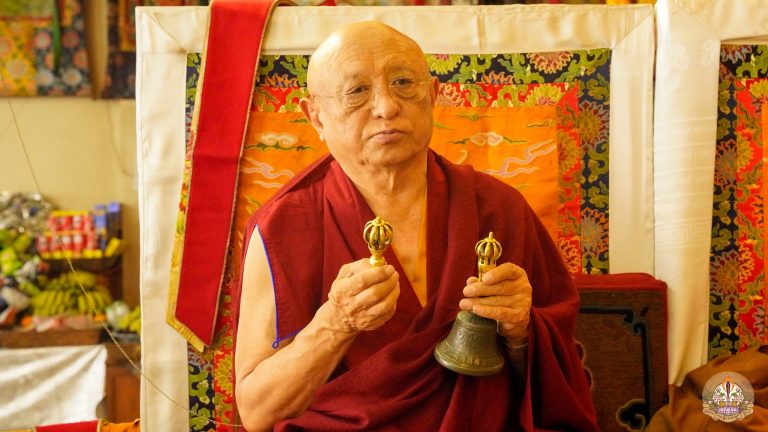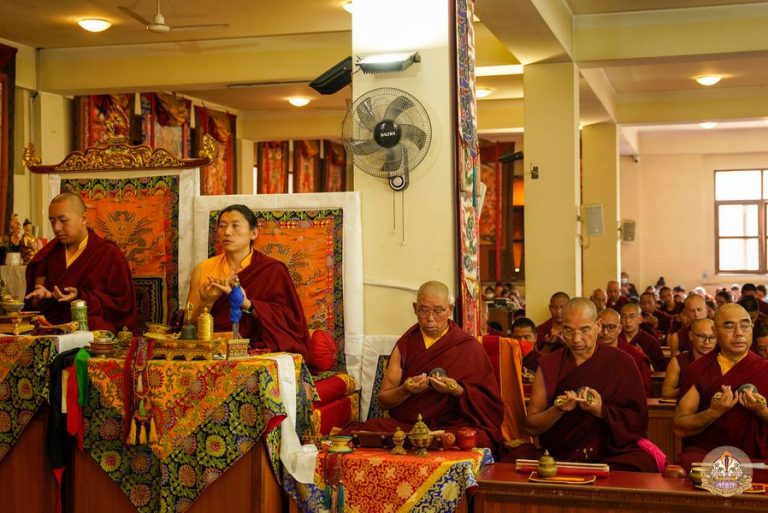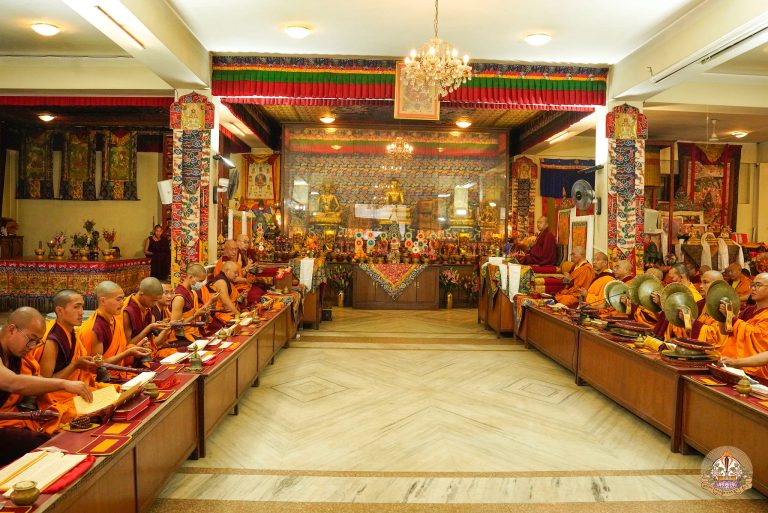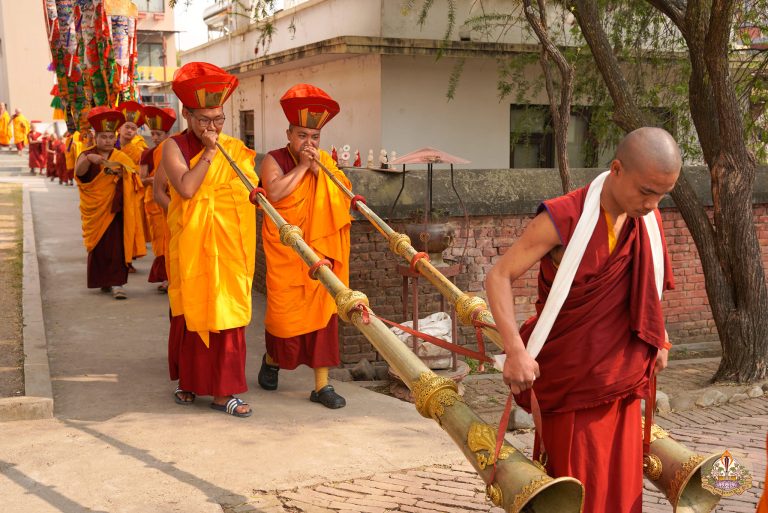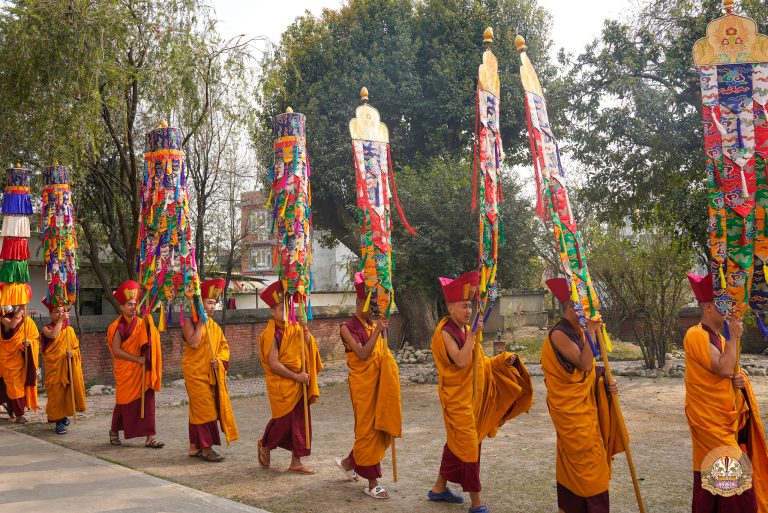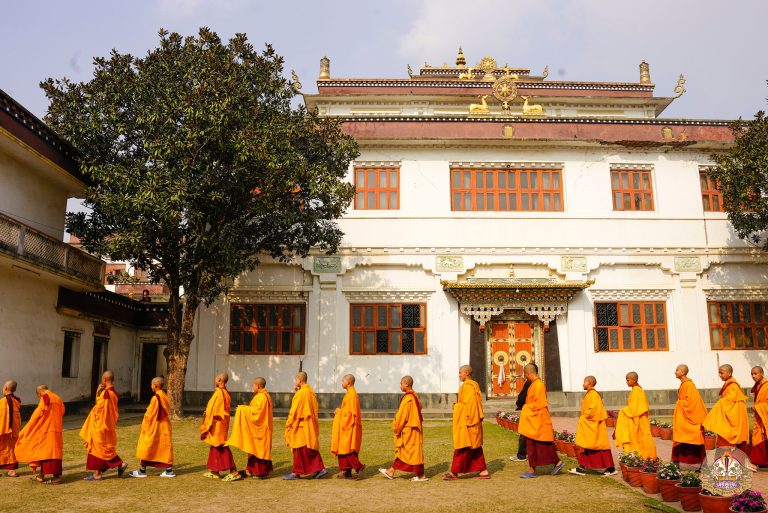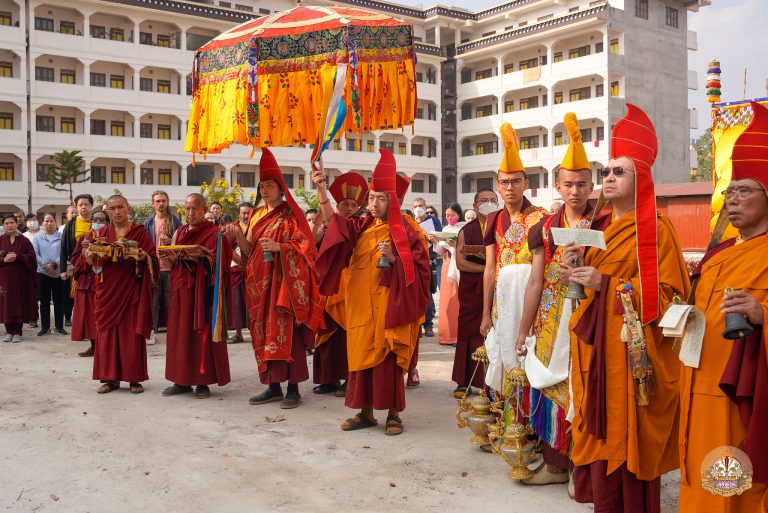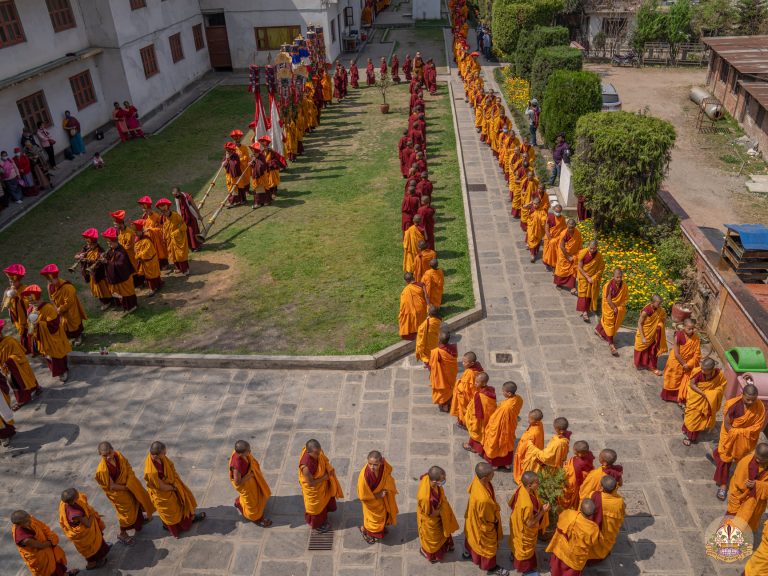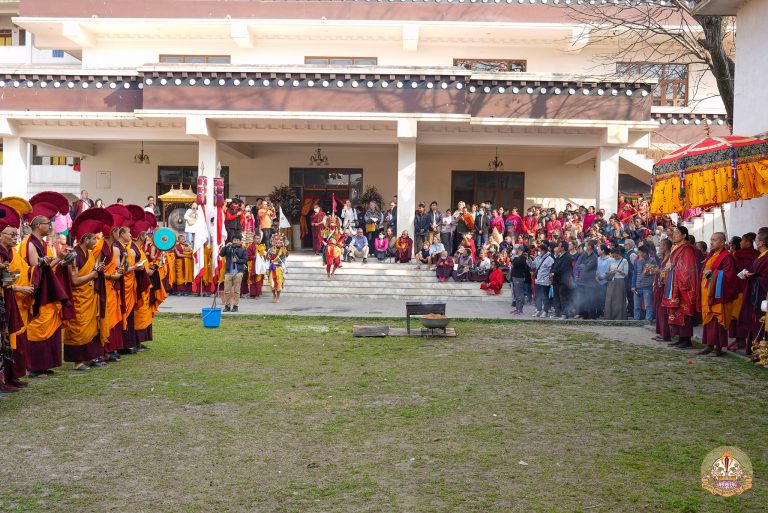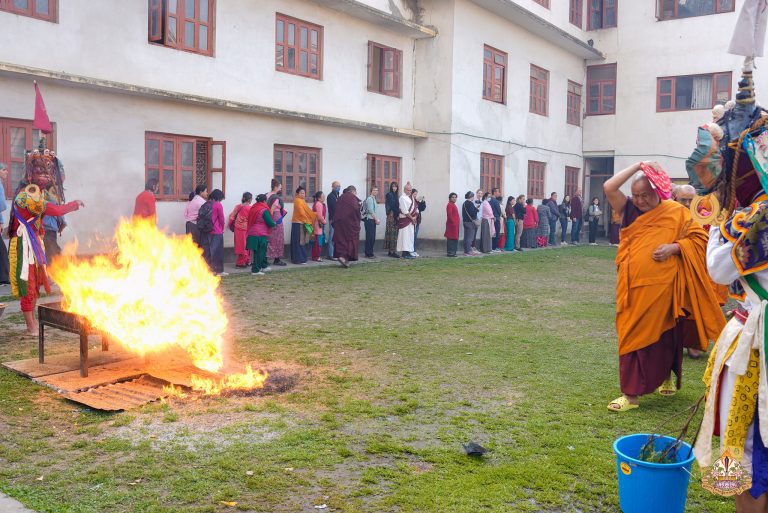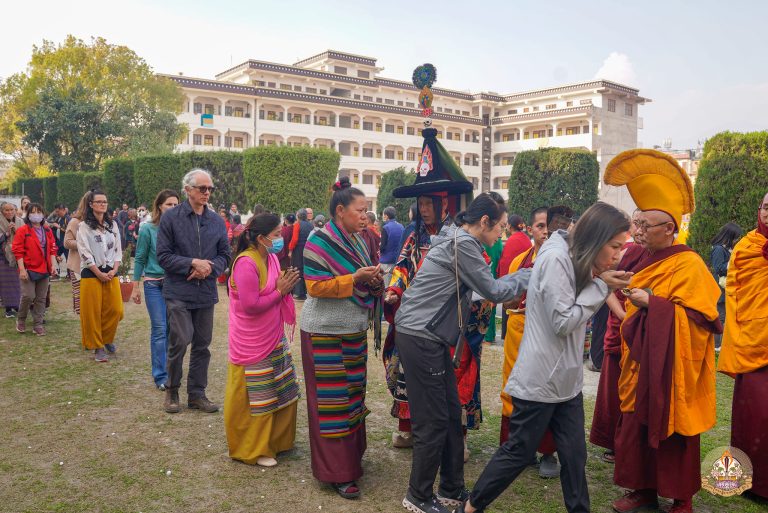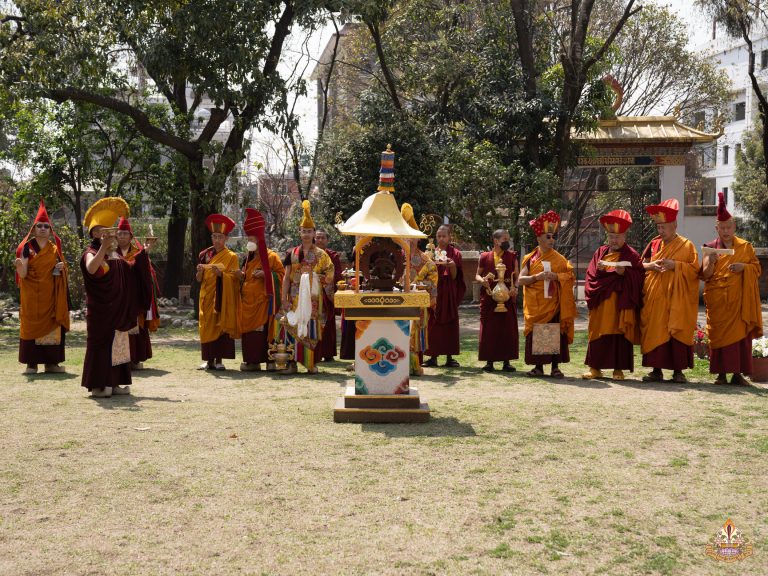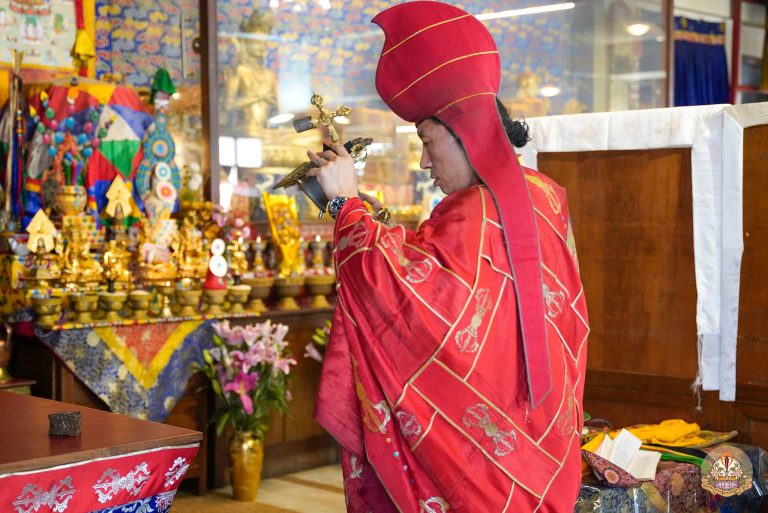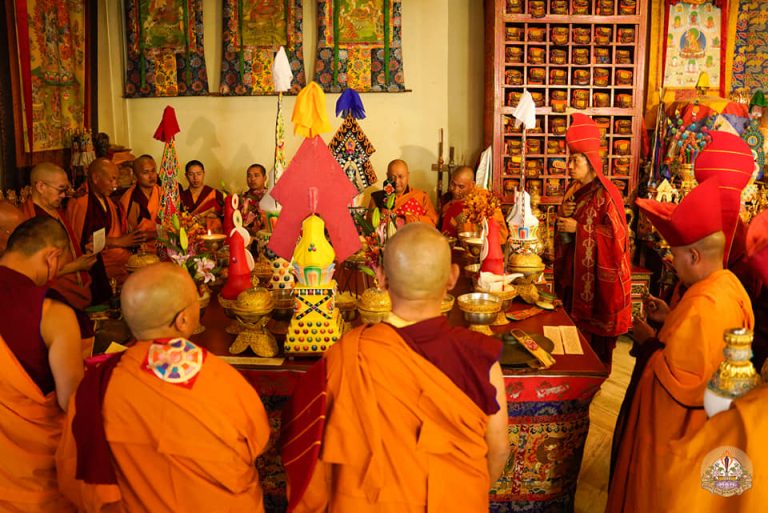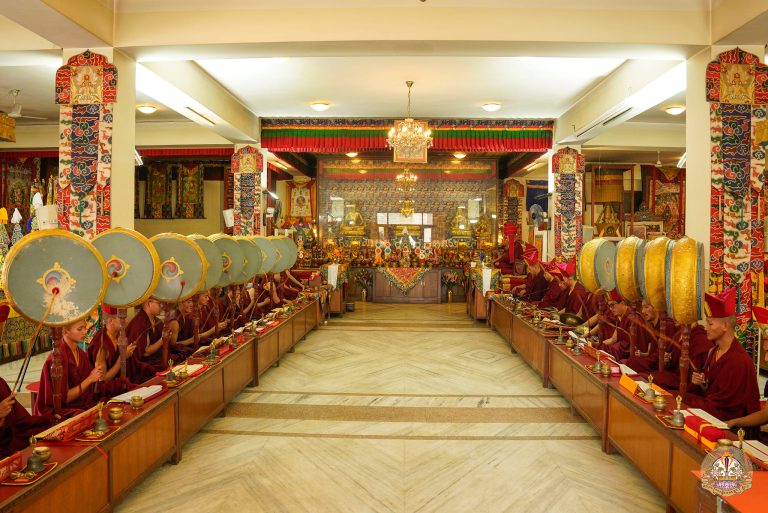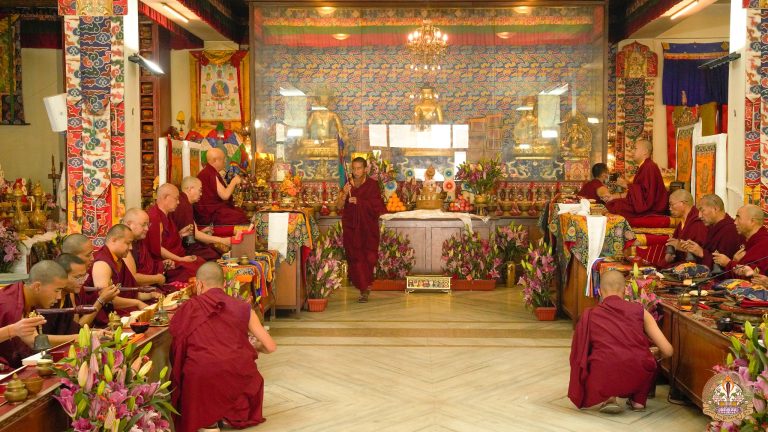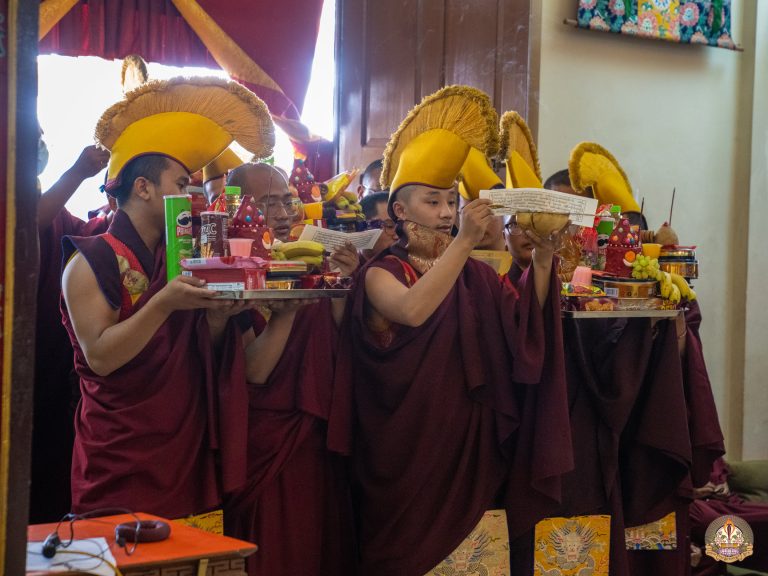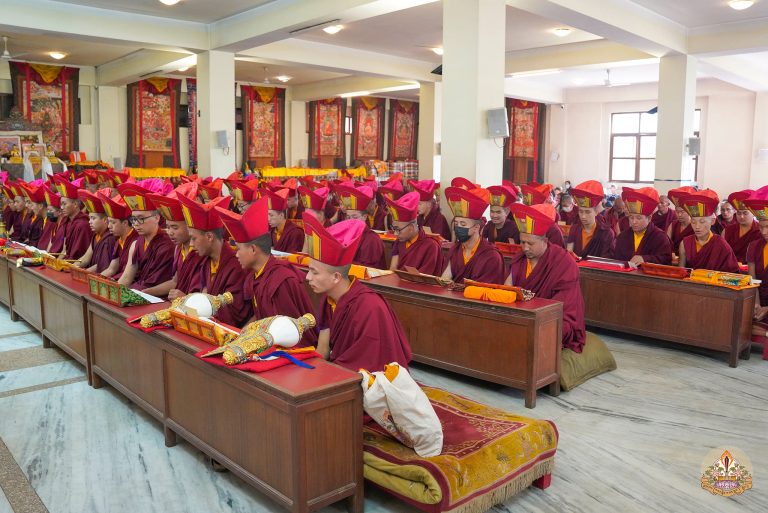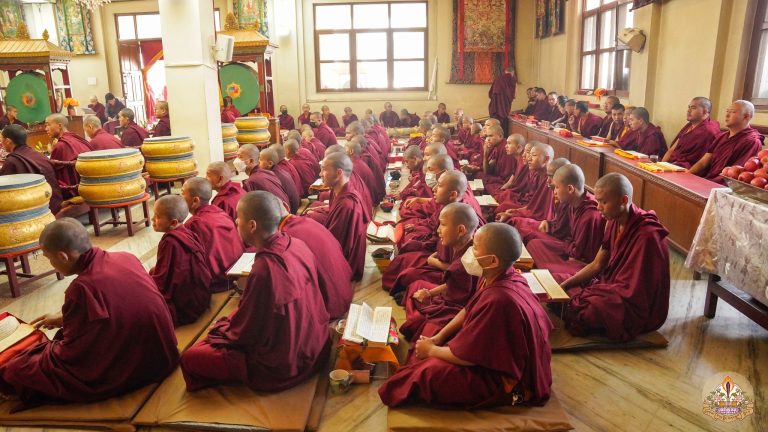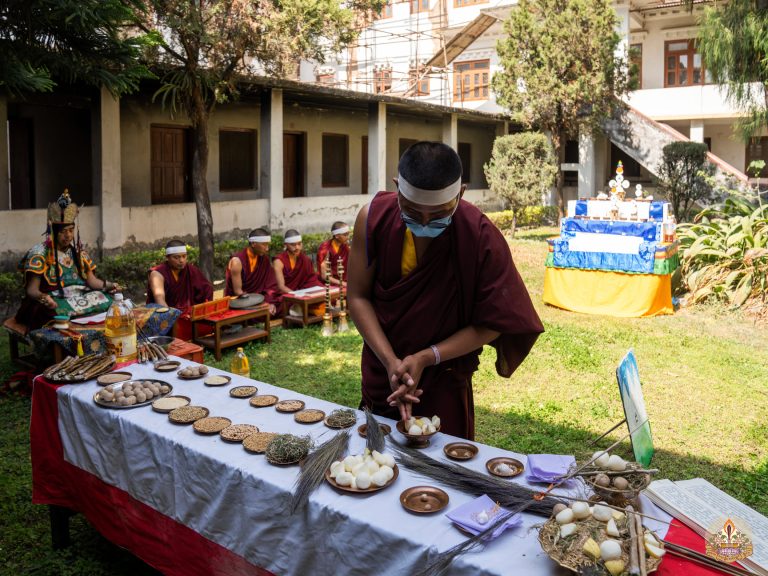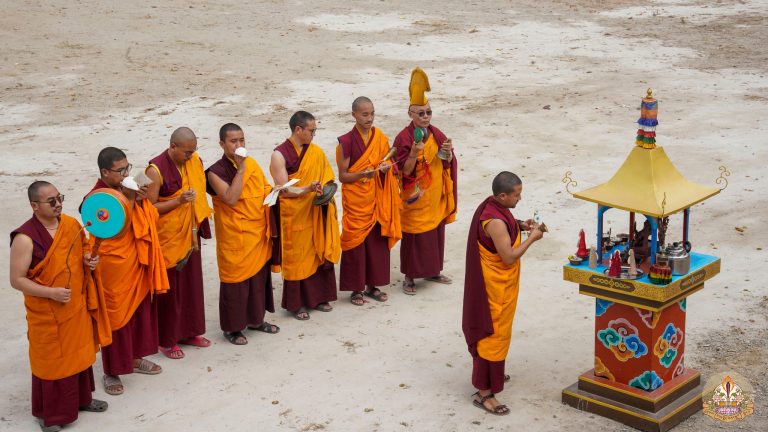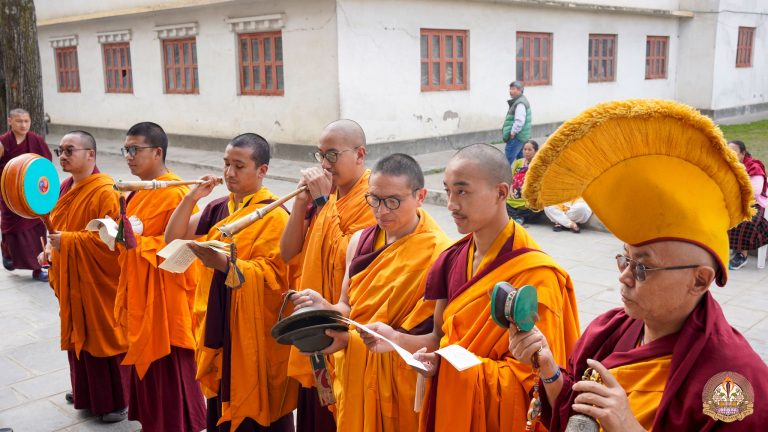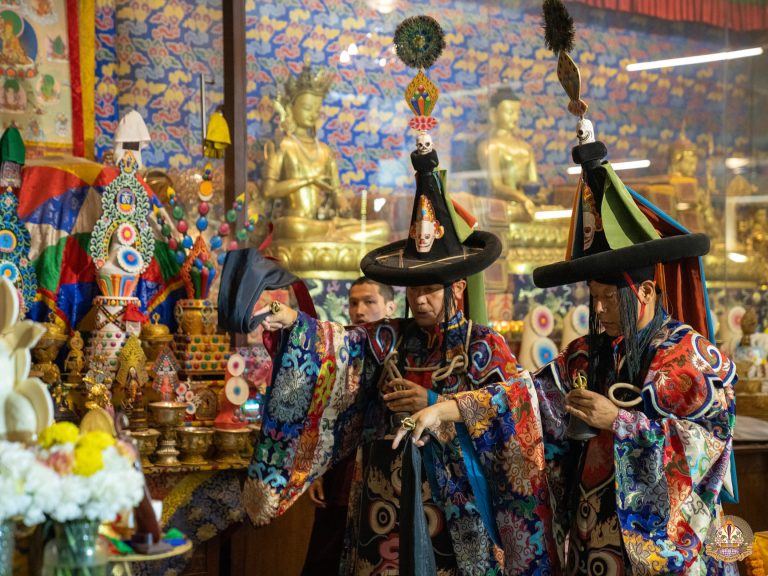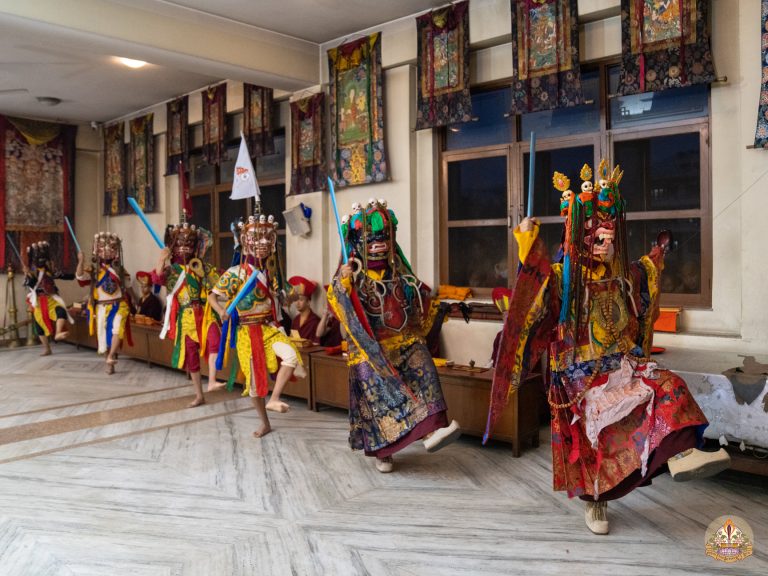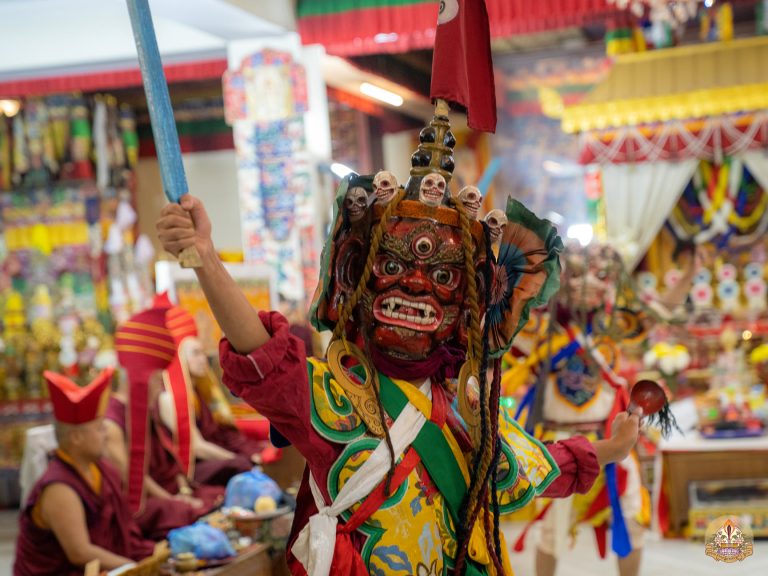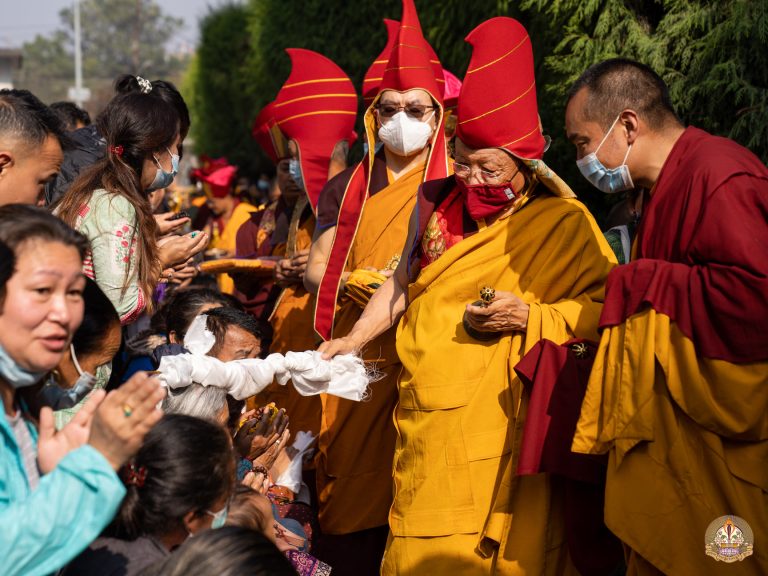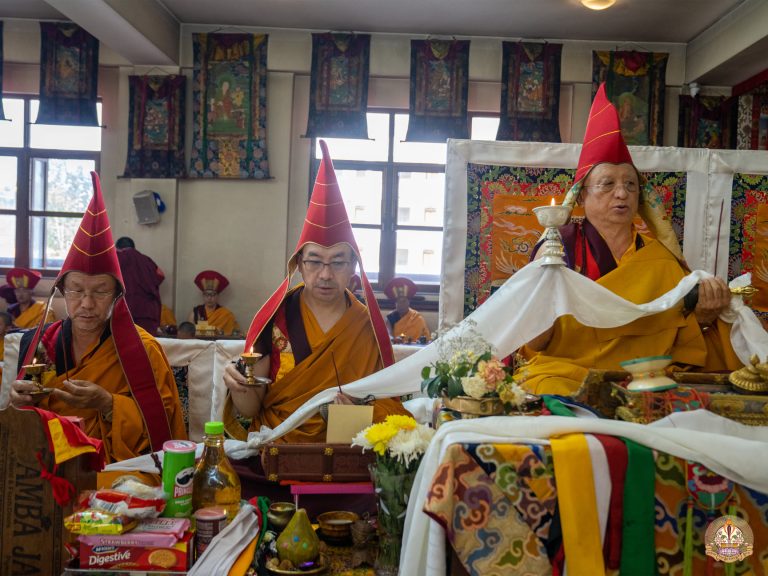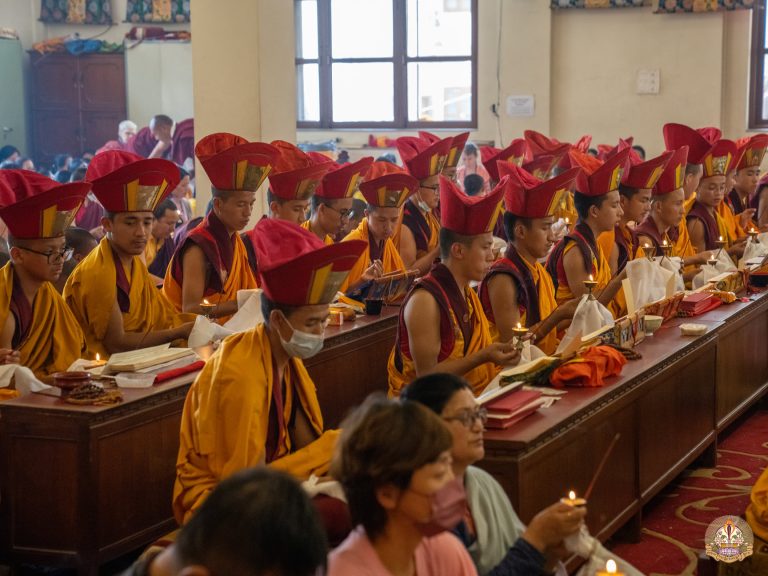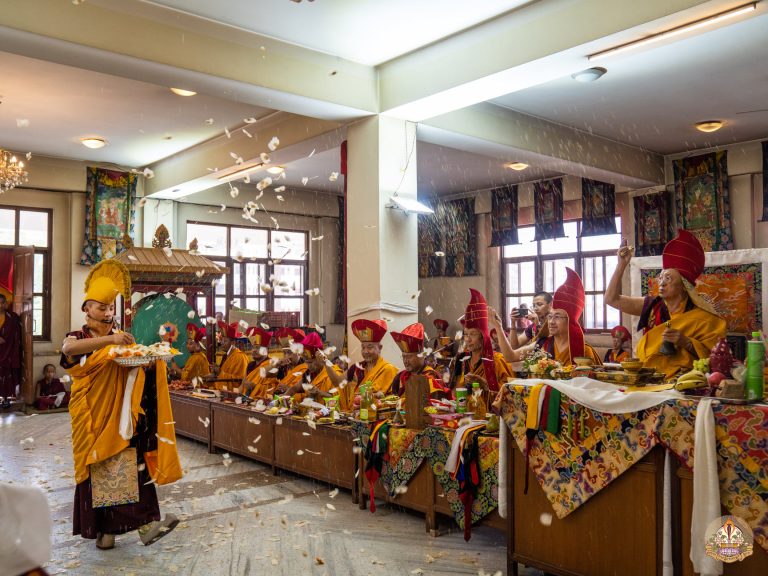The annual 9 day Tsekar Drubchen is performed each year by the monks of Ka-Nying Shedrub Ling Monastery on the 8th – 16th days of the 1st month of the Tibetan calendar. This ceremony belongs to the “Great Accomplishment Group Sadhana of White Amitayus” extracted from among the 40 volumes of the Chokling Tersar. The Drubchen ushers in auspicious circumstances for practitioners’ twofold attainment of longevity and primordial wisdom.
The Tibetan word ‘Tsekar’ means ‘White Amitayus’ – the Buddha of Longevity whereas ‘Drubchen’ means ‘great accomplishment.’ This tantric sadhana practice is a terma (hidden treasure), concealed in Tibet by Guru Rinpoche, and rediscovered centuries later by the incarnated great tertön (treasure-finder), Terchen Chokgyur Dechen Lingpa.
On the first day of the Drubchen, sacramental articles are concealed inside a 3-metre tall beautifully decorated tiered mandala, adorned with silk brocades, torma cakes, deity statues, and so forth that will hopefully please the longevity deities. Throughout the 9 days, the articles within the mandala will be ritually consecrated by means of the participants’ visualizations and recitations of liturgical prayers which invoke the blessings of Amitayus based on his special mantras.
The first day focuses on displaying the hand mudras of the divine of the ultimate reality, the union of appearance and emptiness, arising in the figure of the symbolic divine.
The second day focuses on purification practices to eliminate all obstacles including a Vajrasattva practice which takes place in the western protector chapel and a fire offering to subdue disease, evil spirits, and discursive thoughts.
The third day focuses on Cham (lama dancing) – the assembly of deities who appear as symbolic tamers of beings without departing from the sphere of reality (Dharmatha) and dispel obstacles for practice.
The fourth day focuses on the empowerment for ripening mind-streams.
The fifth day focuses on the three restorations: restore longevity by serving gurus and meditating on the Amitayus mandala; restore merit by praising the assembled deities and making the offerings of outer, inner, and secret truths; restore karma by releasing lives.
The sixth day focuses on the propitiation ceremony for dharma protectors by making offerings and praising the host of deities who protect the sublime Dharma until the end of time.
The seventh day focuses on the empowerment of fire offerings that contain siddhis: the exorcist ritual of dispelling obstacles and misfortunes in accomplishing the supreme and common siddhis.
The eighth day focuses on receiving the siddhi of long life. A fire-offering is performed for the sake of increasing wisdom, enjoyment, retinue, merit, and lifespan, along with butter lamps offerings and prayers for good fortune.
On the Drubchen’s final day, which begins at 3:00am, the main temple is filled with the 9-day participants and scores of other devotees. In the outside courtyard, a crowd of several thousand gathers from the early morning to receive the blessings and empowerments when the mandala is finally opened and its various sacraments are distributed to all those present.
Make an offering · CLOSED NOW FOR OFFERINGS AND NAMES
If you are unable to make an offering but would like to be included in the White Amitāyus (Tsekar) Drubchen, please send your name(s) to [email protected].
